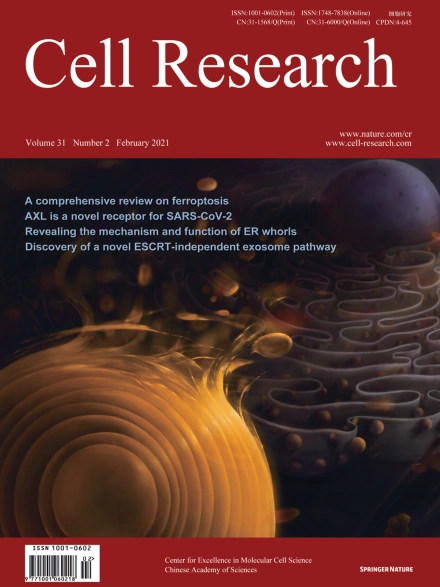
Advanced Search
Submit Manuscript
Advanced Search
Submit Manuscript
Volume 31, No 2, Feb 2021
ISSN: 1001-0602
EISSN: 1748-7838 2018
impact factor 17.848*
(Clarivate Analytics, 2019)
Volume 31 Issue 2, February 2021: 206-218 |
A virus-induced conformational switch of STAT1-STAT2 dimers boosts antiviral defenses
Yuxin Wang1 , Qiaoling Song2 , Wei Huang3 , Yuxi Lin4 , Xin Wang5 , Chenyao Wang6 , Belinda Willard7 , Chenyang Zhao5 , Jing Nan4 , Elise Holvey-Bates1 , Zhuoya Wang2 , Derek Taylor3 , Jinbo Yang2,* , George R. Stark1,*
1Department of Cancer Biology, Lerner Research Institute, The Cleveland Clinic Foundation, Cleveland, OH 44195, USAType I interferons (IFN-I) protect us from viral infections. Signal transducer and activator of transcription 2 (STAT2) is a key component of interferon-stimulated gene factor 3 (ISGF3), which drives gene expression in response to IFN-I. Using electron microscopy, we found that, in naive cells, U-STAT2, lacking the activating tyrosine phosphorylation, forms a heterodimer with U-STAT1 in an inactive, anti-parallel conformation. A novel phosphorylation of STAT2 on T404 promotes IFN-I signaling by disrupting the U-STAT1-U-STAT2 dimer, facilitating the tyrosine phosphorylation of STATs 1 and 2 and enhancing the DNA-binding ability of ISGF3. IKK-ε, activated by virus infection, phosphorylates T404 directly. Mice with a T-A mutation at the corresponding residue (T403) are highly susceptible to virus infections. We conclude that T404 phosphorylation drives a critical conformational switch that, by boosting the response to IFN-I in infected cells, enables a swift and efficient antiviral defense.
https://doi.org/10.1038/s41422-020-0386-6